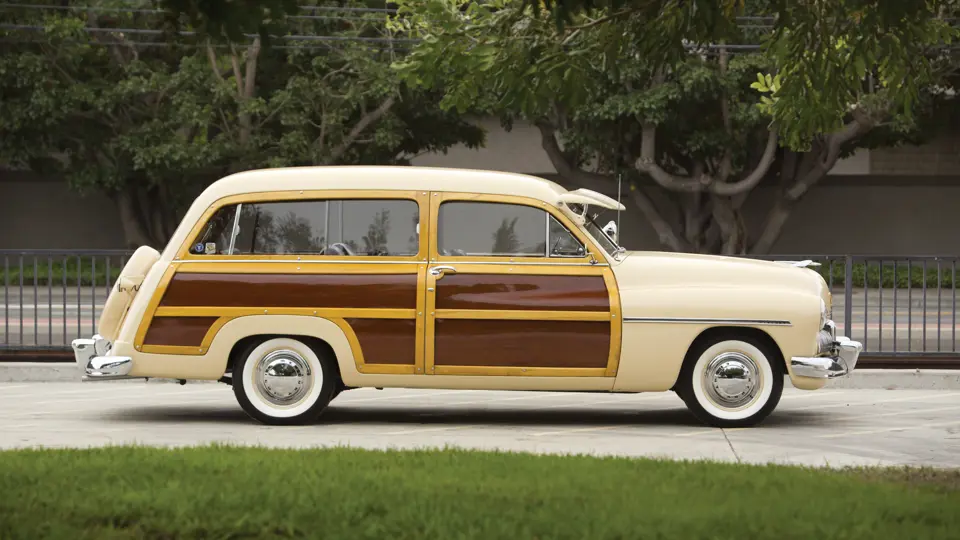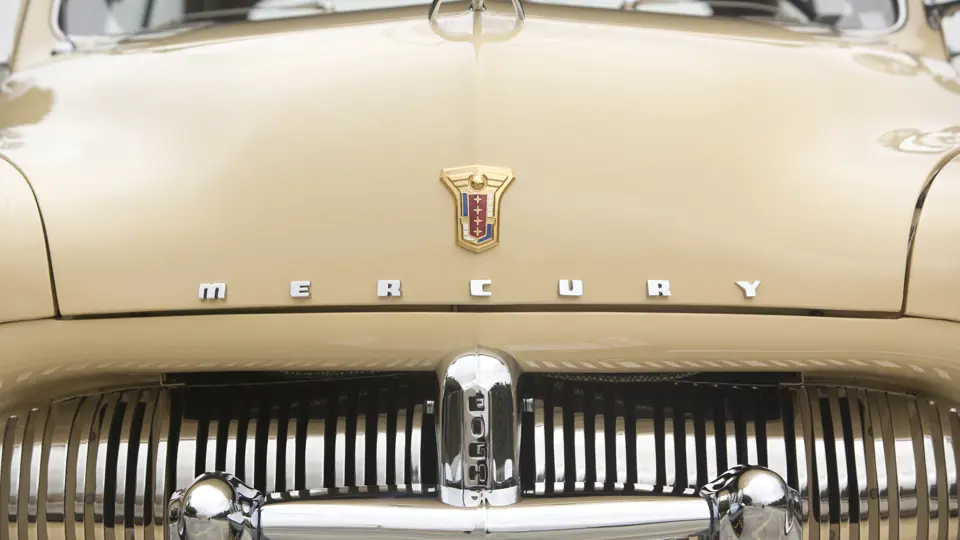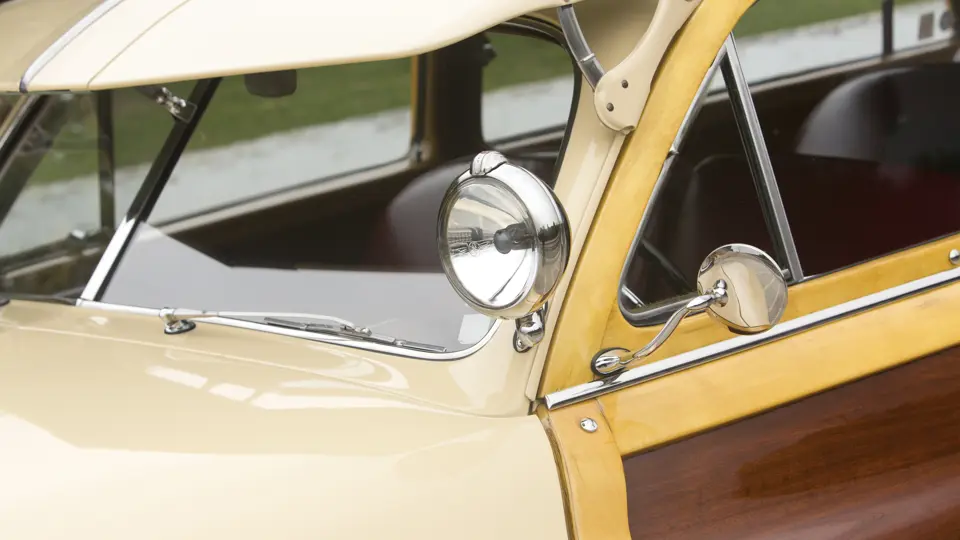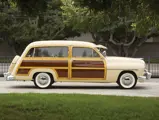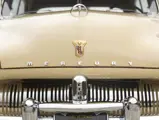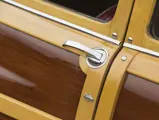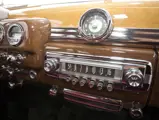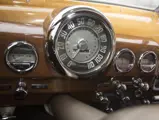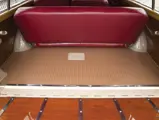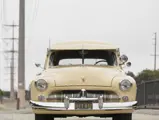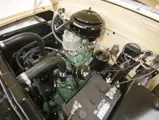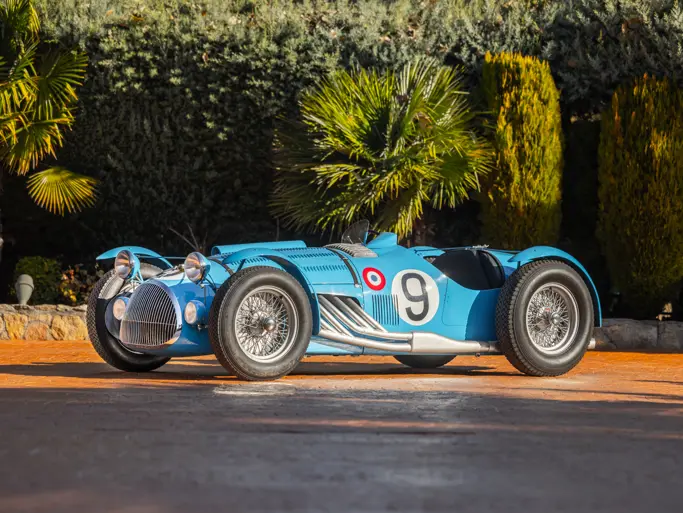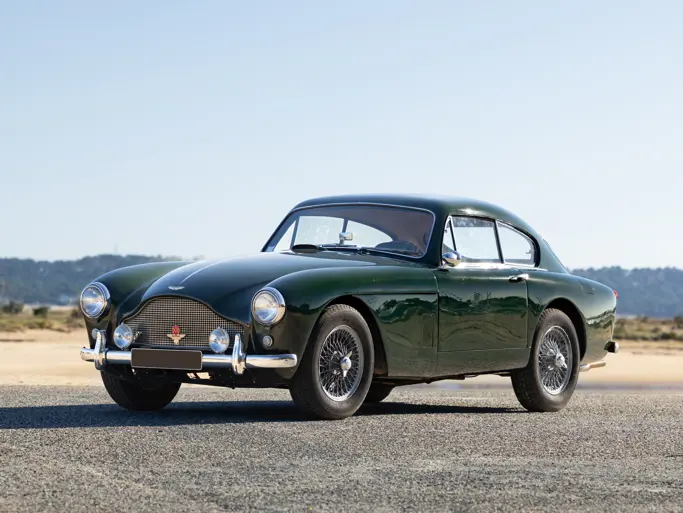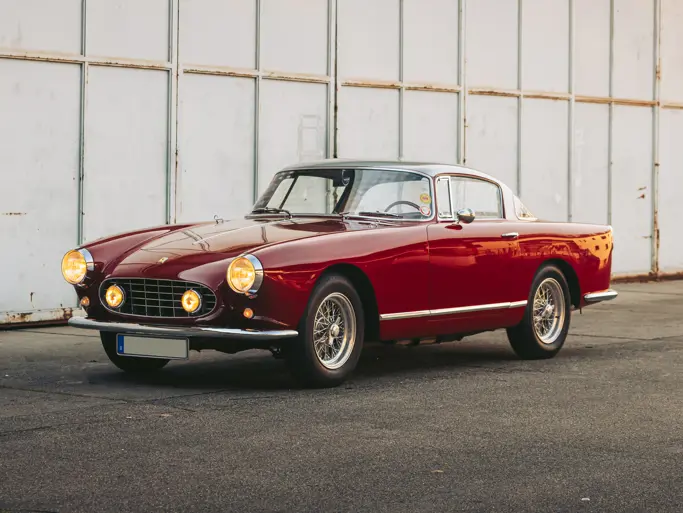Model 9CM. 110 bhp, 255.4 cu. in. L-head V-8 engine, three-speed manual transmission with overdrive, coil-spring independent front suspension, live rear axle with semi-elliptic leaf springs, and four-wheel hydraulic drum brakes. Wheelbase: 118 in.
The 1949 Mercury was originally intended as a Ford. Designed in Ford’s in-house studio by E.T. “Bob” Gregorie, it was to be the entry-level model of a trio, the senior members of which were Mercury and Lincoln. Before plans were finalized, a competing Ford proposal from George Walker was chosen by management, and Gregorie’s Ford was “promoted” to a Mercury. His other two models became Lincoln and Lincoln Cosmopolitan, respectively. A smaller version of the Mercury went into production at Ford France as the Vedette.
Although it is a much larger looking car than the new Ford, the 1949 Mercury actually preserved its former 118-inch wheelbase. A stepped sculpture line ran from the front fenders, across the doors, back along the rear quarter, and dipped down to the bumper. A version of the new Ford station wagon body was married to the Mercury front clip, which required heat bending, not just of the laminated birch or maple trim, but also of the mahogany panels.
As in the past, there was but a single series of Mercurys; thus, the new wagon was simply called the “Mercury Station Wagon.” Although the basic body was identical to the Ford’s, Mercury received several upmarket features, like an all-leather interior (Ford had genuine leather only on the seat cushions), twin taillights, and directional signals. While Mercury shared Ford’s new independent front suspension and open drive line, it departed from the common engine program from 1946–1948 and received a larger 255-cubic inch version of the flathead V-8. The new car, introduced in April 1948, was well received. Model year sales expanded six-fold from 1948, aided in part by a longer model year. In all, more than 300,000 were sold, with just over 8,000 of them being station wagons.
A surfer all its life, this 1949 Mercury woodie was built in Los Angeles and was found in Huntington Beach, California. It has recently been restored and is painted in its original Bermuda Cream. Equipped with the desirable overdrive transmission, it has a period sun visor, wheel trim rings, spotlight, radio, and fresh-air heater.
The restoration was completed to show standards. The seats and headliner, in red, were done in the shops of “Wagon Master” Nick Alexander. Mechanical and engine work was also performed there. The paint is very good, with no chips, scratches, or orange peel. The brightwork is also very good, except for some pits on the visor brackets. The interior is all in good order, with a few nice touches, like the original oil and tire pressure sticker in the glove box.
The alignment of the doors is not perfect, nor is the fit of the wood at the left rear, but the entire effect is nice. The engine bay appears as new, and when driven by an RM specialist, the car started with ease and drove smoothly. The steering is easy and smooth, the brakes are strong, and the acceleration is flawless. A great car for concours or touring, it will transport eight adults without strain and in comfort. Try and find a car that will do that today.
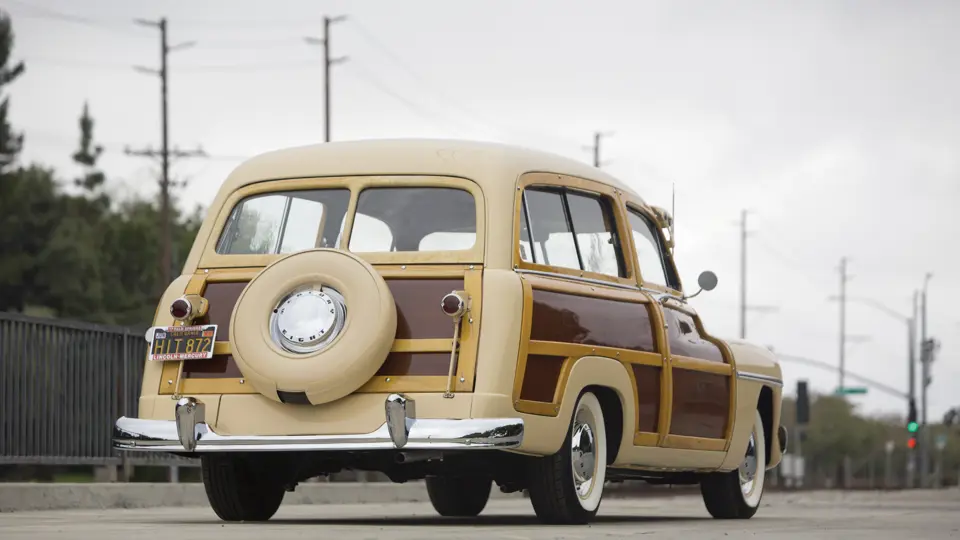



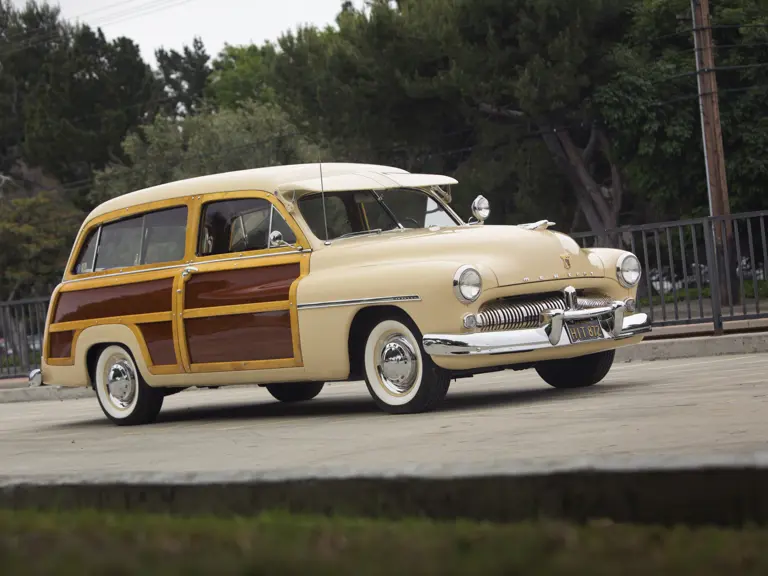
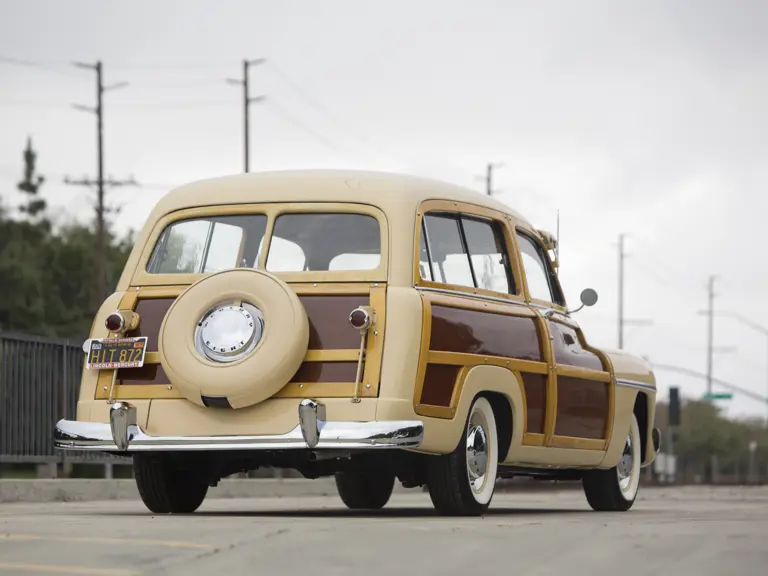
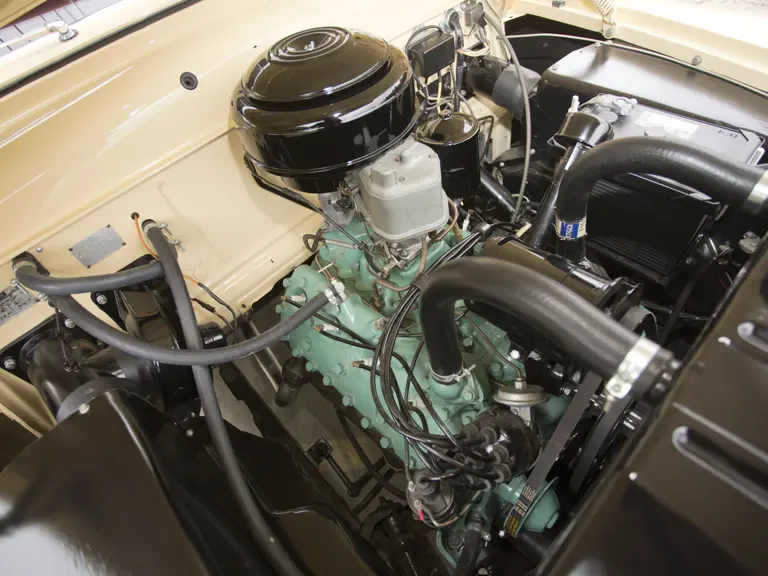


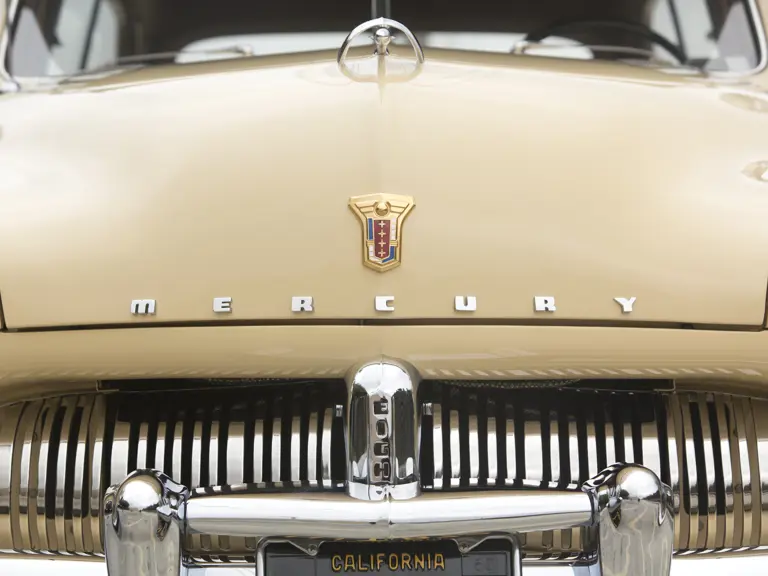

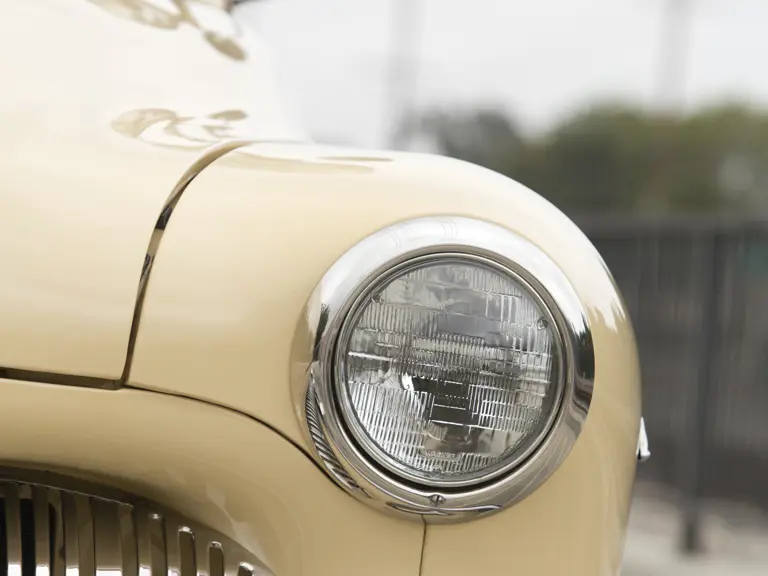
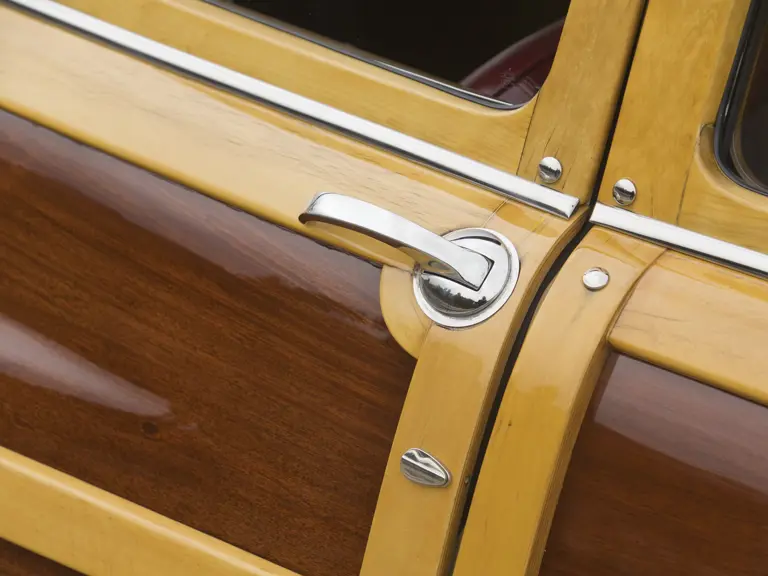

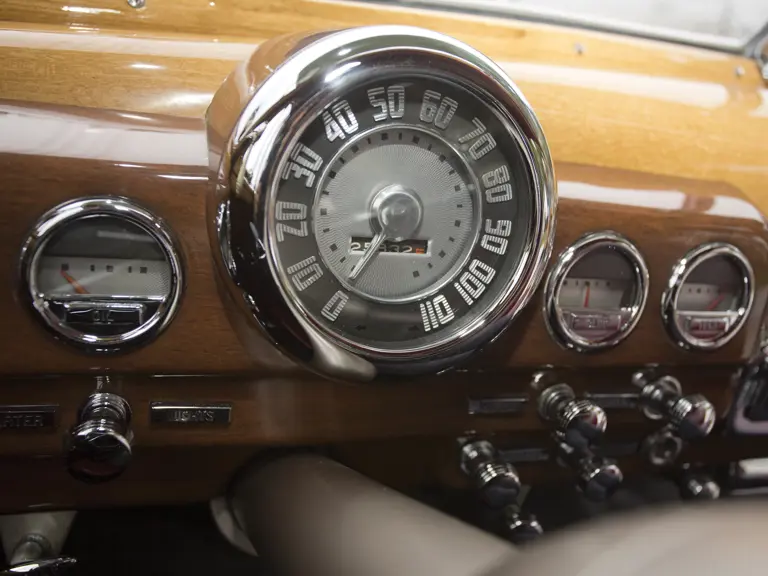
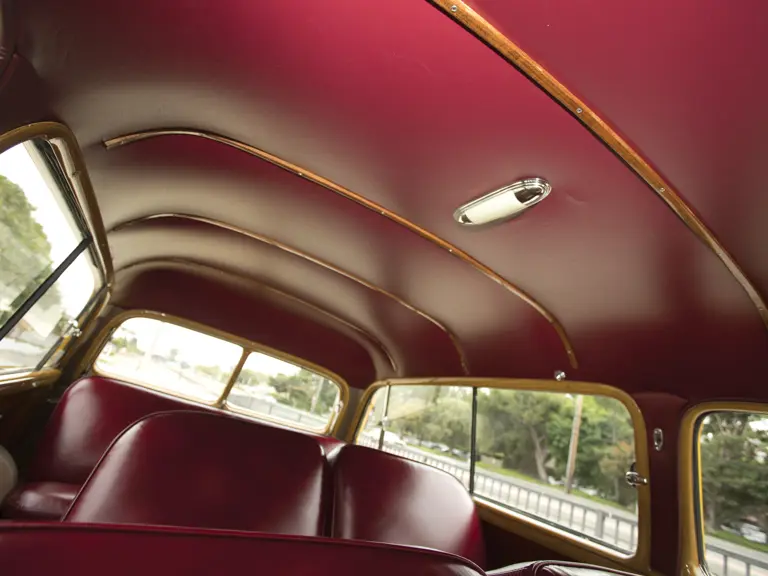
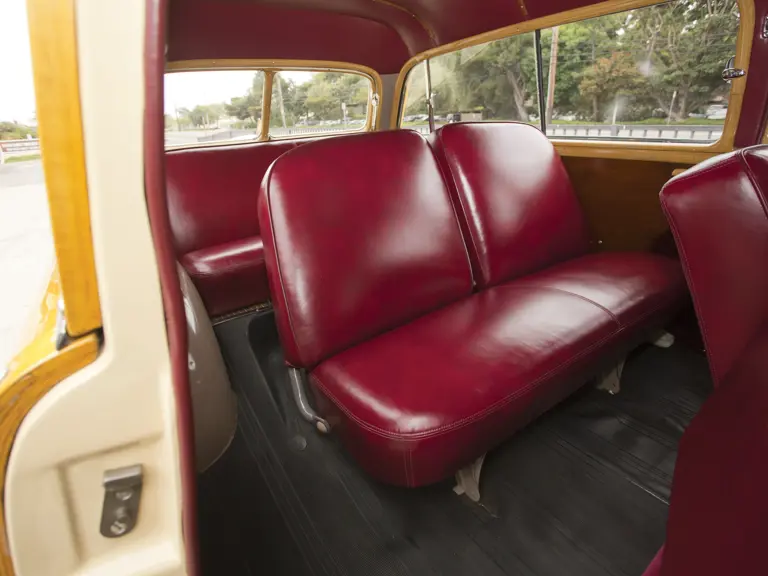

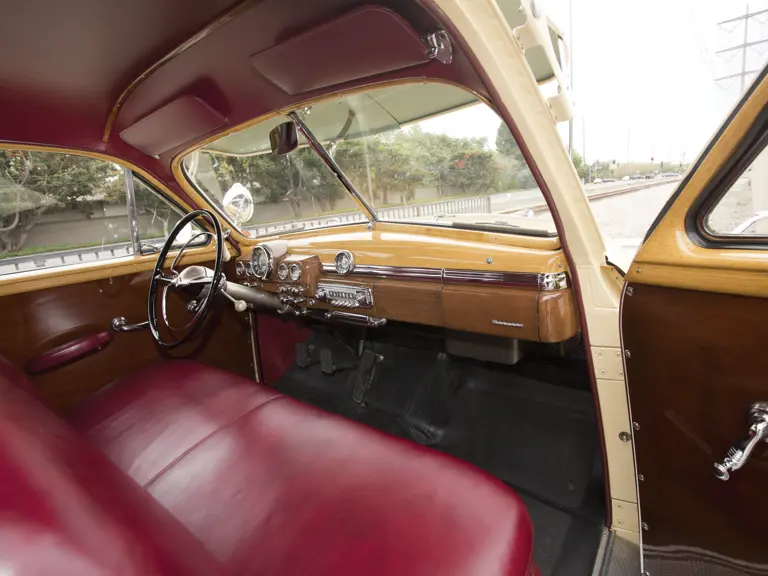
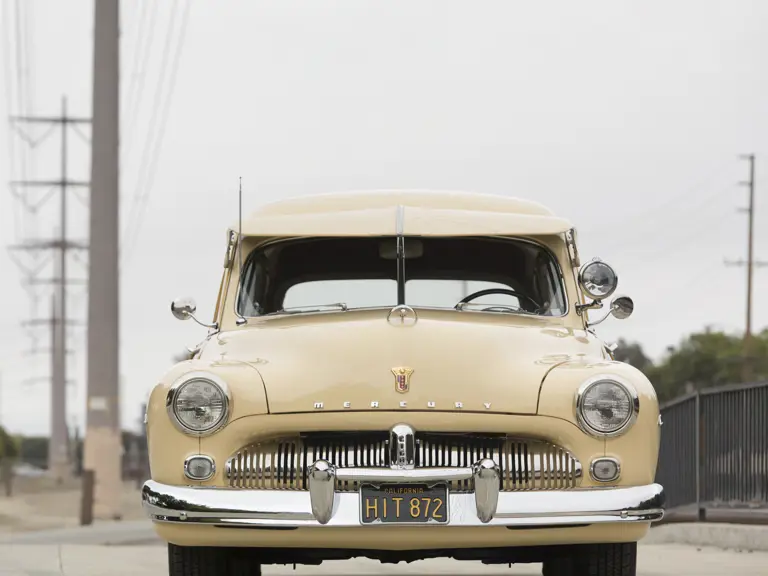

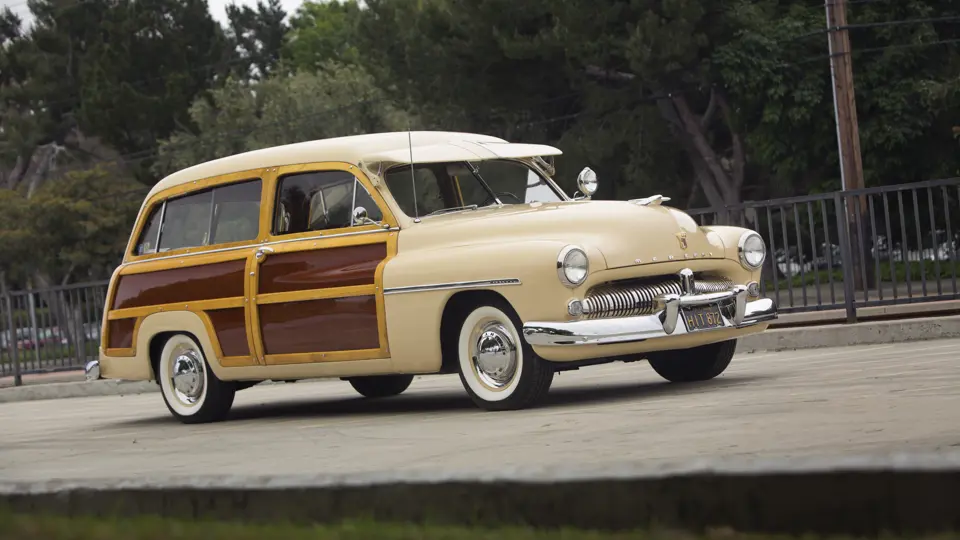
 | Monterey, California
| Monterey, California
